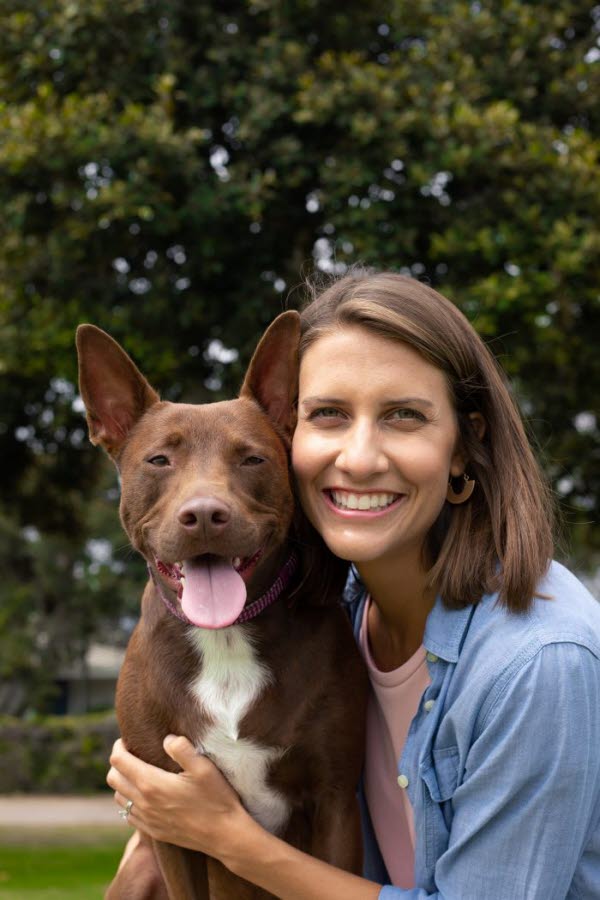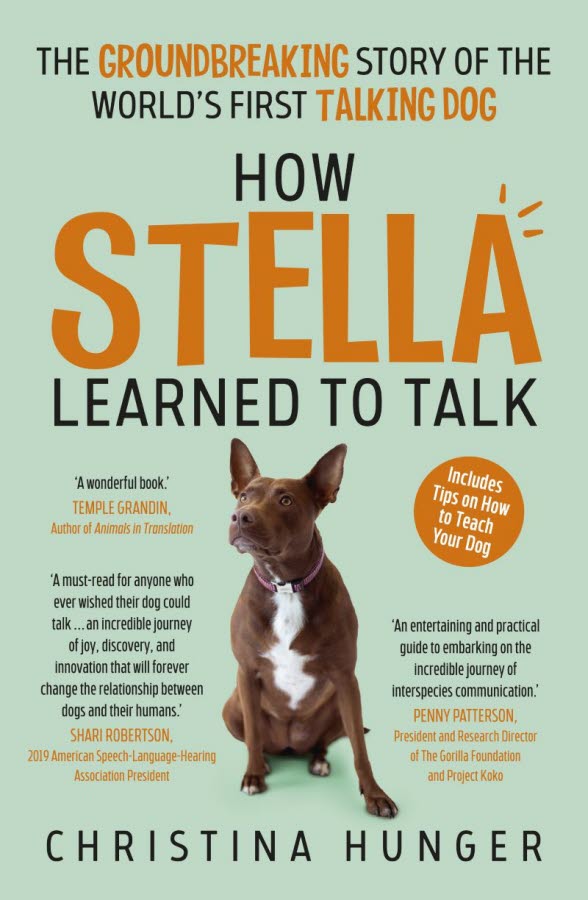
*Images credit: Ariana Velazquez
Much like babies being treated by human practitioners, animal patients cannot talk to their veterinarian about their problems, so veterinarians must become highly skilled at observing and examining animals to discover and diagnose illness and injury. But what would it be like if our pets could talk to both us, and their vet?
American speech-language pathologist and author Christina Hunger usually works with toddlers who have significant delays in their language development. One of the techniques she utilises in her work is the use of Augmentative and Alternative Communication (AAC) devices to help the children communicate. An ACC device consists of a series of colourful buttons which are each programmed with a pre-recorded word.
Teaching Stella the dog to talk
Being the owner of a young Catahoula-Blue Heeler cross dog named Stella, Ms Hunger wondered whether the AAC devices could be used to enable her dog to talk. The result is delightfully detailed in her new book How Stella Learned to Talk.
“I used language facilitating strategies from my work as a speech therapist, and used Augmentative and Alternative Communication to teach Stella how to use words. This mostly consisted of narrating Stella’s actions using short simple phrases, and using her buttons to talk during natural contexts.”
“I believe the desire to communicate and connect are innate. I just provided Stella with a way to say the words she was hearing and understanding every day. I never prompted Stella to use words on command, nor gave her treats as reinforcement - which showed me how naturally motivated she was to express her thoughts, needs, and desires with words,” explained Ms Hunger.
The process of teaching Stella to talk began with the use of a paw-sized button that was programmed with the word ‘outside’, which was clicked whenever Ms Hunger took Stella out of the house. Stella now has a bank of more than thirty word buttons, and uses them either individually or together to create near-complete sentences.
“This experience has completely opened my mind to the complexities of Stella’s thoughts. I feel like I understand her personality so much more and have grown incredibly close to Stella. We have a much more collaborative relationship than the typical owner-pet dynamic because Stella can tell me her specific thoughts, wants, and desires. It’s not me just making the decisions on her behalf,” said Ms Hunger.
Interspecies communication revolution
In the book, Ms Hunger outlines the techniques she used to teach Stella, broken down into simple stages and actionable steps that any dog owner can use to start communicating with their pet.
“I think my work with Stella is only the beginning of an interspecies communication revolution. It’s important to keep exploring how we can share a language with the animals who share our environment with us. If animals are understanding words and we are using words to communicate to them, they should have the opportunity to say words to us as well,” said Ms Hunger.
Maybe in the years to come, veterinarians will be able to take advantage of this interspecies communication technique in terms of how they interact with pets in the veterinary hospital.

